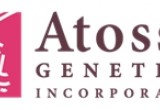Benign Breast Disease Associated with Future Cancer Risk in African-American Women
Atossa Genetics develops noninvasive method of nipple aspirate fluid collection for cytological testing.
Online, February 13, 2013 (Newswire.com) - Breast cancer deaths in African-American women occur at a 36 percent higher rate than for all races combined. A recently published study in Cancer Prevention Research by Michele Cote, Ph.D., associate professor of oncology at Wayne State University, of data from 1,400 20- to 84-year-old African-American women who underwent invasive surgical breast biopsies between 1997 and 2000, documented pre-cancerous hyperplasia in fully 32 percent of the biopsies. In women with hyperplasia with atypia the incidence of cancer over the next decade was over threefold higher than for women without hyperplasia, and these data may explain part of the difference in morbidity for these women.
A noninvasive method of obtaining the same specimens as studied in this paper has been developed by Atossa Genetics, Inc. The ForeCYTE Breast Health Test incorporates the use of an FDA-cleared, patented device, similar to a breast pump in appearance, that is intended for use in the collection of nipple aspirate fluid for cytological testing in women between the ages of 18 and 73. As determined by the FDA, the collected fluid can be used in the determination and/or differentiation of normal versus premalignant versus malignant cells. The procedure is noninvasive and virtually painless for the patient, and takes about 10 minutes to administer. The specimens collected are tested in Seattle, WA at the National Reference Laboratory for Breast Health, a subsidiary of Atossa Genetics. If necessary, precancerous changes can be addressed with lifestyle intervention or pharmaceutical treatment. For example, in women with atypical hyperplasia, treatment with tamoxifen produces a >80 percent reduction in the development of breast cancer.
Ultimately, the precancerous changes may be treated locally with intraductal therapy, also being developed by Atossa. The therapeutic system, which is in the research phase, will provide pharmaceutical formulations to be introduced into a "sick duct" with an FDA-cleared microcatheter and reverse the early changes before they become malignant. This technique avoids treating the entire patient with powerful but toxic drugs, instead acknowledging that the problem lies with a milk duct that is two inches long and the diameter of an angel hair pasta strand. This could serve as the platform to realize the goal of preventing breast cancer.
Women who might be at risk for breast cancer should ask their doctors if the ForeCYTE test is right for them. For more information, please visit www.atossagenetics.com.
